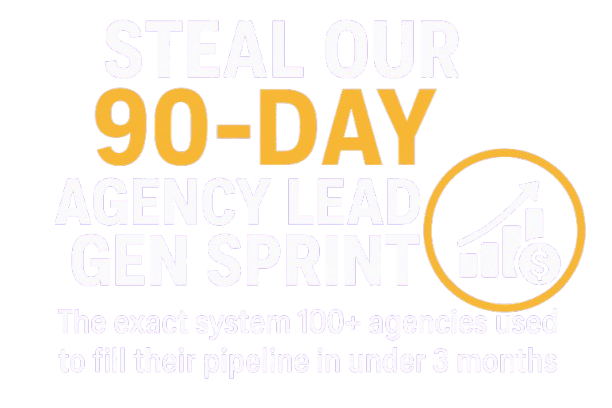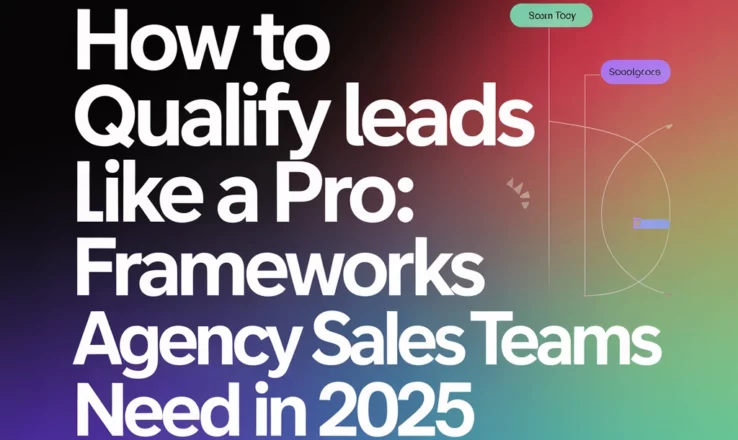
Here's the uncomfortable truth: 94% of agencies are qualifying leads wrong. They're using outdated frameworks designed for product sales, not service-based businesses. They're wasting time on prospects who will never buy, while letting high-value opportunities slip through the cracks.
Today, we're going to fix that. I'm going to walk you through the exact qualification frameworks that separate million-dollar agencies from the ones struggling to hit six figures. This isn't theory: this is the battle-tested methodology I've used to help hundreds of agency owners build predictable sales pipelines.
Get ready to completely transform how your team evaluates prospects. By the end of this guide, you'll have a systematic approach that identifies your best opportunities faster, shortens your sales cycle, and dramatically improves your close rate.
The Lead Qualification Crisis Facing Agencies in 2025
The agency landscape has fundamentally shifted. According to HubSpot's 2024 State of Marketing report, 61% of marketers say generating high-quality leads is their biggest challenge: up from 52% just two years ago. But here's what most agencies miss: the problem isn't lead generation. It's lead qualification.
Most agencies treat every lead the same way. They book discovery calls with anyone who raises their hand, spending hours presenting to prospects who were never going to buy. Meanwhile, serious buyers get frustrated by generic sales processes that don't address their specific needs.
The data backs this up. Salesforce research shows that high-performing sales teams are 2.3x more likely to use guided selling and qualification frameworks compared to underperforming teams. Yet most agencies still rely on gut feeling and basic budget questions.

This scattershot approach is killing your profitability. Every unqualified lead that makes it to your calendar costs you time, energy, and opportunity cost. More importantly, it creates a false sense of pipeline health while your actual conversion rates stay embarrassingly low.
The Evolution of Lead Qualification: From BANT to Modern Frameworks
Let's start with some context. Lead qualification as a discipline emerged in the 1950s with IBM's sales training programs. The concept was simple: not every prospect is worth pursuing, so develop criteria to separate viable opportunities from time-wasters.
For decades, BANT (Budget, Authority, Need, Timeline) dominated sales qualification. Created by IBM in the 1960s, BANT worked well in the era of product sales where buyers had clear budgets and defined purchasing processes.
But BANT has serious limitations for modern agency sales:
Budget: Most prospects don't have predetermined budgets for agency services. They're trying to understand what's possible within their constraints.
Authority: Decision-making in 2025 involves multiple stakeholders. The person you're talking to might not be the final decision-maker, but they could be a crucial influencer.
Need: This assumes prospects understand their needs. In reality, many don't know what they need: they just know they have problems.
Timeline: Agency buyers rarely have rigid timelines. They move when they find the right partner.
According to Forrester's B2B Buying Study, 77% of B2B buyers say their purchasing process has become more complex over the past two years. The linear, checkbox approach of BANT doesn't match how modern businesses actually buy.
This is why forward-thinking agencies have moved beyond BANT to more sophisticated frameworks that account for the realities of service-based sales.
Framework #1: CHAMP – The Challenge-First Revolution
CHAMP (Challenges, Authority, Money, Prioritization) flips the traditional approach by starting with challenges rather than budget. Developed by sales training company Khabeer, CHAMP recognizes that understanding problems comes before discussing solutions.
Here's how to implement CHAMP for agency sales:
C – Challenges: Uncover the Real Pain Points
Start every qualification conversation by understanding what's broken. Don't ask generic questions like "What are your marketing challenges?" Instead, use specific, problem-focused queries:
- "Walk me through what happened that made you start looking for an agency."
- "What's the one thing about your current marketing that keeps you up at night?"
- "If nothing changes in the next 12 months, what does that cost you?"
Pro tip: Listen for emotional language. When prospects say things like "It's frustrating" or "We're desperate," you've found real pain worth solving.
H – Authority: Map the Decision-Making Process
Modern B2B buying involves an average of 6.8 decision-makers, according to Gartner research. Your job isn't just to identify the final decision-maker: it's to understand the entire buying committee.
Ask these specific questions:
- "Who else would be affected by this decision?"
- "What's happened in the past when you've tried to implement something like this?"
- "Who would need to sign off on a project of this scope?"
Critical insight: Often, the person with budget authority isn't the person with implementation authority. Both matter for agency partnerships.
M – Money: Understand Financial Reality
Instead of asking about budget (which prospects hate), explore financial impact:
- "What's this problem currently costing you?"
- "How do you typically handle investments in marketing?"
- "What would solving this be worth to your business?"
This approach helps prospects self-qualify based on value rather than arbitrary budget numbers.
P – Prioritization: Assess Urgency and Commitment
The best indicator of a serious prospect is what they're willing to sacrifice to solve their problem:
- "What are you not doing so you can focus on this?"
- "How does this compare to other initiatives you're considering?"
- "What happens if you don't solve this in the next quarter?"
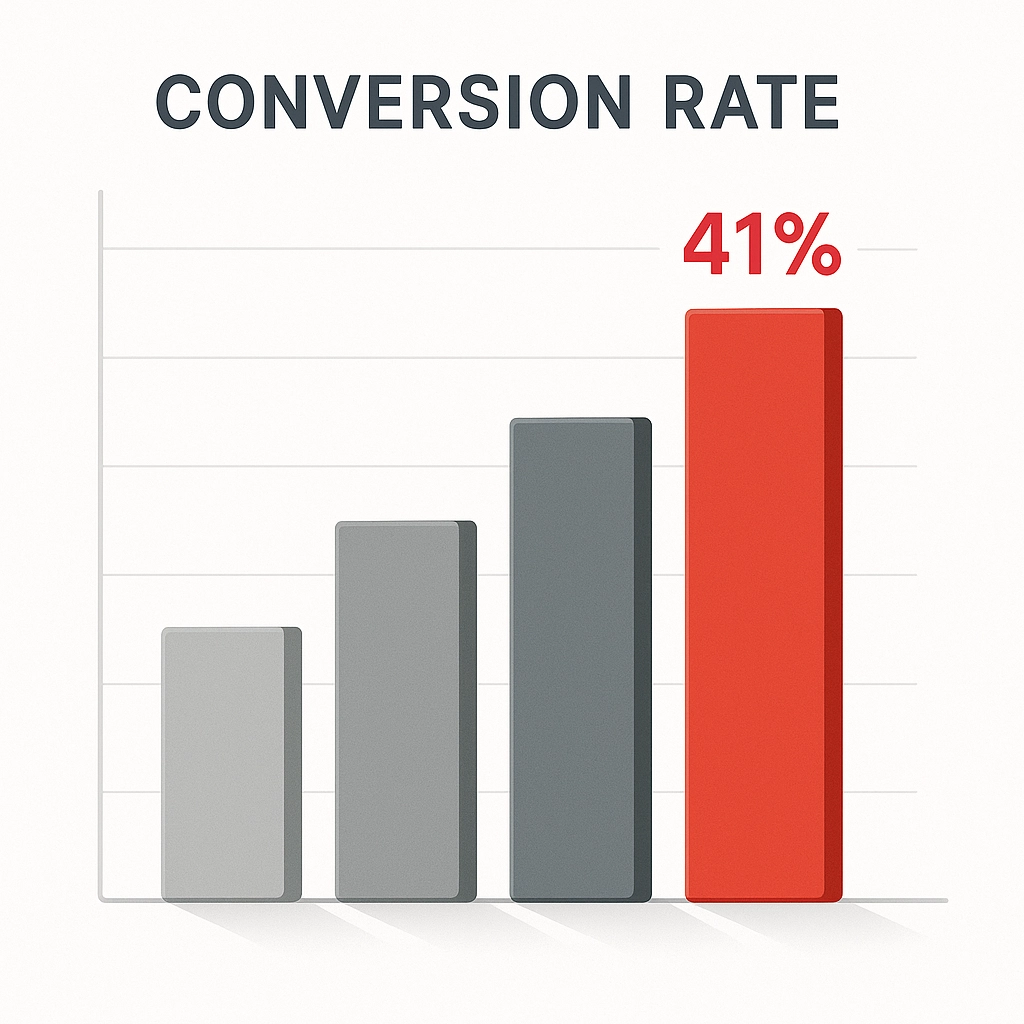
CHAMP Implementation Example: I worked with a digital marketing agency that increased their close rate from 23% to 41% by implementing CHAMP qualification. They discovered that prospects who could articulate specific revenue impact (like "We're losing $50K per month in potential deals") were 4x more likely to close than those who gave vague answers about "needing more leads."
Framework #2: GPCTBA/C – The Comprehensive Approach
For agencies pursuing enterprise clients or complex, multi-service relationships, GPCTBA/C (Goals, Plans, Challenges, Timeline, Budget, Authority, Consequences) provides the depth needed for sophisticated sales processes.
G – Goals: Align on Desired Outcomes
Start with aspiration, not problems:
- "What does success look like for your marketing in the next 18 months?"
- "If we could wave a magic wand and fix everything, what would be different?"
- "What metrics matter most to your leadership team?"
Key insight: Goals reveal buying motivation. A prospect aiming to "increase leads by 50%" has different needs than one trying to "establish thought leadership."
P – Plans: Understand Current Strategy
Explore what they've already tried and what they're currently doing:
- "What's your current approach to achieving these goals?"
- "What marketing initiatives are you running now?"
- "What's working well that we'd want to build on?"
This helps you position your agency as a strategic partner rather than another vendor.
C – Challenges: Identify Obstacles
After understanding goals and plans, dive into what's preventing success:
- "What's stopping you from reaching these goals with your current approach?"
- "Where are you seeing the biggest gaps?"
- "What have you tried that didn't work as expected?"
T – Timeline: Map the Buying Process
Instead of asking when they want to start, understand their decision-making process:
- "What does your evaluation process typically look like?"
- "Who else are you talking to?"
- "What needs to happen before you can move forward?"
B – Budget: Explore Investment Capacity
Frame budget discussions around investment and return:
- "How do you typically budget for marketing investments?"
- "What kind of return would make this a no-brainer investment?"
- "How do you measure ROI on agency partnerships?"
A – Authority: Map Decision-Making
Go deeper than "Who makes the final decision?":
- "Walk me through how decisions like this get made at your company."
- "Who would be most affected by success or failure here?"
- "What does the approval process look like for investments of this size?"
C – Consequences: Understand Stakes
Explore both negative consequences of inaction and positive implications of success:
- "What happens if you don't solve this in the next 6 months?"
- "What would achieving these goals mean for your career/company?"
- "What's at risk if your current approach continues not working?"
Framework #3: MEDDIC – The Enterprise Agency Standard
MEDDIC (Metrics, Economic Buyer, Decision Criteria, Decision Process, Identify Pain, Champion) was developed by sales consultant Jack Napoli for complex B2B sales. It's particularly powerful for agencies pursuing enterprise clients or large-scale engagements.
M – Metrics: Quantify Everything
Enterprise buyers think in numbers. Every conversation should include specific, measurable outcomes:
- "What metrics are you using to measure current performance?"
- "How would you measure the success of this partnership?"
- "What's the quantifiable impact of not solving this problem?"
Example: Instead of "increase brand awareness," look for "achieve 40% aided brand recognition in our target market within 12 months."
E – Economic Buyer: Find the Money
This goes beyond authority to identify who controls the budget and has P&L responsibility:
- "Who owns the budget for marketing investments?"
- "Whose goals would this initiative directly impact?"
- "Who would be measured on the success or failure of this project?"
D – Decision Criteria: Understand Evaluation Standards
Most prospects haven't explicitly defined how they'll choose an agency. Help them clarify:
- "What's most important to you in an agency partner?"
- "How will you evaluate different proposals?"
- "What would make this decision easy for you?"
D – Decision Process: Map the Journey
Enterprise sales involve complex approval processes:
- "What steps need to happen before you can move forward?"
- "Who else needs to be involved in this decision?"
- "What's your timeline for making a decision?"
I – Identify Pain: Quantify Business Impact
Connect problems to business outcomes:
- "How is this impacting your business results?"
- "What's the cost of not solving this?"
- "How does this affect other areas of the business?"
C – Champion: Develop Internal Advocates
Identify and develop relationships with people who will advocate for your agency internally:
- "Who else would benefit from solving this problem?"
- "Who would you want to involve in our next conversation?"
- "What would help you make the case internally for moving forward?"
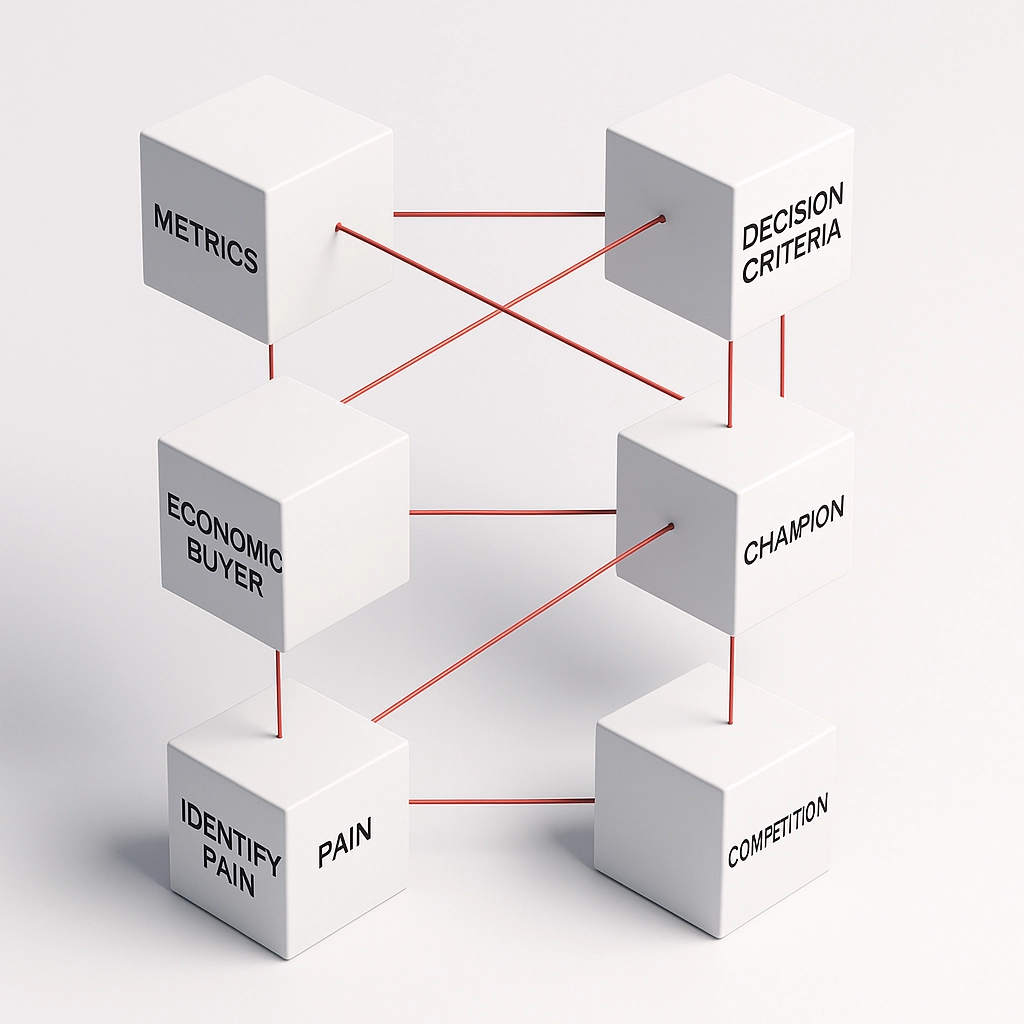
The 2025 Lead Qualification Tech Stack
Modern lead qualification requires the right technology foundation. Here's the essential stack for agencies serious about systematic qualification:
CRM Integration and Lead Scoring
Your CRM should automatically score leads based on qualification criteria. HubSpot, Pipedrive, and Salesforce all offer built-in scoring capabilities, but you need to configure them for agency-specific factors:
Demographic scoring: Company size, industry, technology stack
Behavioral scoring: Website engagement, content consumption, email interactions
Qualification scoring: CHAMP/GPCTBA/C responses, timeline indicators, budget signals
Conversation Intelligence
Tools like Gong, Chorus, or Otter.ai analyze sales conversations to identify qualification patterns. They can automatically detect:
- Pain point mentions
- Budget discussions
- Timeline indicators
- Buying committee references
- Competitive mentions
Implementation tip: Create custom trackers for your specific qualification frameworks. Train the AI to identify CHAMP responses or MEDDIC indicators automatically.
Qualification Automation
Use tools like Typeform, Calendly, or Chili Piper to collect qualification information before prospects book calls:
Pre-call qualification forms should include:
- Company size and industry
- Current marketing challenges
- Timeline for making a decision
- Budget range or investment capacity
- Primary goals and objectives
Intent Data Integration
Services like Bombora, 6sense, or ZoomInfo Intent integrate with your CRM to provide buying signals:
- Researching competitor content
- Consuming category-related information
- Visiting pricing or case study pages
- Attending relevant webinars or events
Advanced Qualification Strategies for Different Lead Sources
Different lead sources require adapted qualification approaches. Here's how to optimize your process for each channel:
Inbound Lead Qualification
Inbound leads have already demonstrated interest, but you need to quickly separate browsers from buyers:
Immediate Response Protocol: Contact within 5 minutes if possible, maximum 1 hour. MIT research shows that responding within 5 minutes makes you 100x more likely to connect with the prospect.
First-call objectives:
- Confirm they're a legitimate prospect
- Understand their timeline and urgency
- Identify the decision-making process
- Schedule a proper discovery call if qualified
Disqualification criteria for inbound leads:
- No clear business problem
- Unrealistic timeline expectations
- No budget authority or influence
- Poor company-agency fit
Outbound Lead Qualification
Cold outreach requires more sophisticated qualification since prospects haven't raised their hands:
Research-based qualification: Use tools like ZoomInfo, Apollo, or LinkedIn Sales Navigator to pre-qualify based on:
- Recent funding rounds
- Executive changes
- Technology implementations
- Competitor mentions
Message-level qualification: Your outbound messages should include qualification elements:
- Reference specific business challenges
- Mention relevant case studies
- Include qualifying questions in your outreach
Response-based qualification: When prospects respond to outbound, immediately assess:
- Tone and interest level
- Questions they ask
- Availability for conversations
- References to business priorities
Referral Lead Qualification
Referrals have the highest close rates but still need proper qualification:
Referrer briefing: Before contacting the referral, understand:
- Why the referrer thought of you
- What problems they mentioned
- Relationship quality with the referrer
- Any specific context or background
Modified qualification approach: Referrals often skip early qualification steps, but don't assume they're automatically qualified. Use a gentler CHAMP approach that acknowledges the referral relationship.
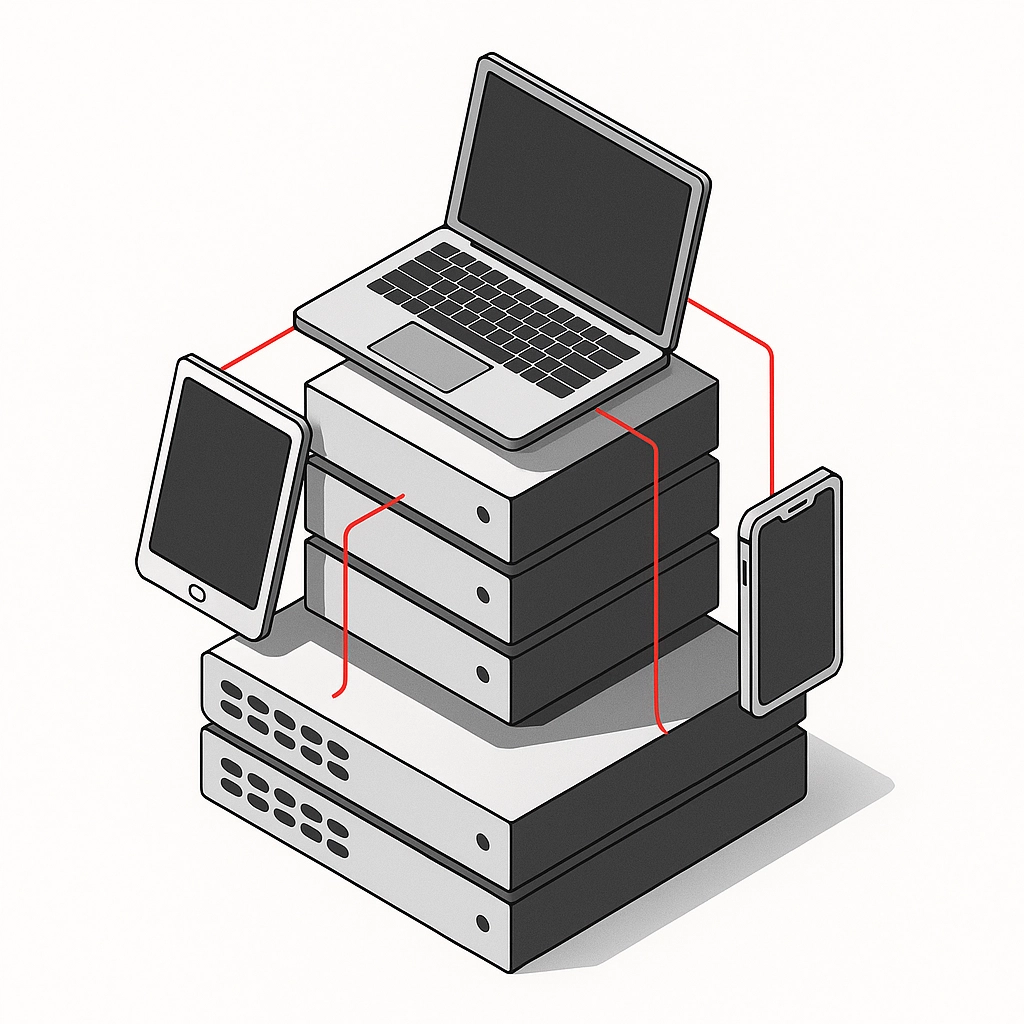
Industry-Specific Qualification Modifications
Different industries require adapted qualification approaches based on buying behaviors, decision-making processes, and common pain points:
SaaS and Technology Companies
Unique characteristics:
- Data-driven decision making
- Rapid growth expectations
- Multiple stakeholders in marketing decisions
- High comfort with agency partnerships
Modified qualification focus:
- Metrics and KPI discussions
- Scalability requirements
- Integration capabilities
- Growth stage alignment
Key questions:
- "What's your current customer acquisition cost?"
- "How do you measure marketing contribution to revenue?"
- "What's your target growth rate for the next 12 months?"
Professional Services Firms
Unique characteristics:
- Relationship-driven business model
- Conservative marketing approach
- Individual vs. firm branding challenges
- Compliance and regulatory considerations
Modified qualification focus:
- Thought leadership goals
- Business development process
- Risk tolerance for marketing initiatives
- Internal buy-in challenges
Key questions:
- "How do you currently generate new business?"
- "What's the balance between individual and firm marketing?"
- "What regulatory considerations affect your marketing?"
E-commerce and Retail
Unique characteristics:
- Revenue directly tied to marketing performance
- Seasonal business cycles
- Multiple channel complexity
- Inventory and fulfillment constraints
Modified qualification focus:
- Revenue impact and attribution
- Seasonal planning needs
- Omnichannel capabilities
- Inventory integration requirements
Key questions:
- "What percentage of revenue comes from digital channels?"
- "How do you handle seasonal fluctuations?"
- "What's your current return on ad spend?"
Building Your Lead Qualification Playbook
Creating a systematic qualification process requires documented procedures that your entire team can follow consistently:
Step 1: Choose Your Primary Framework
Based on your agency type and typical client profile:
For consultative, high-value engagements: Use GPCTBA/C or MEDDIC
For faster-moving, smaller clients: Use CHAMP
For simple, standardized services: Modified BANT may still work
Step 2: Create Qualification Scripts
Develop specific question sets for each framework element. Don't script word-for-word, but provide question banks that sales team members can adapt to their style:
Example CHAMP script bank:
Challenges:
- "What's driving you to look for an agency partner right now?"
- "What's not working with your current marketing approach?"
- "If you could fix one thing about your marketing, what would it be?"
Authority:
- "Who else would be involved in evaluating agency partners?"
- "What's your process for making decisions like this?"
- "Who would be most affected by the success of this project?"
Step 3: Define Qualification Scoring
Create a points-based system for each qualification element:
CHAMP scoring example:
- Challenges (25 points): Specific, quantifiable problems = 25 points; Vague concerns = 15 points; No clear challenges = 0 points
- Authority (25 points): Decision maker = 25 points; Strong influencer = 20 points; Limited influence = 10 points
- Money (25 points): Clear budget/investment capacity = 25 points; General financial ability = 15 points; Budget concerns = 5 points
- Priority (25 points): Urgent, top-3 priority = 25 points; Important but flexible = 15 points; Nice-to-have = 5 points
Qualification threshold: Require 70+ points to advance to proposal stage.
Step 4: Implement Qualification Gates
Create clear handoff points in your sales process:
Marketing Qualified Lead (MQL): Basic demographic and behavioral criteria met
Sales Accepted Lead (SAL): Initial qualification conversation completed
Sales Qualified Lead (SQL): Full qualification framework assessment completed
Opportunity: Proposal requested and submitted

Measuring and Optimizing Your Qualification Process
What gets measured gets improved. Track these key metrics to optimize your qualification effectiveness:
Qualification Conversion Rates
- MQL to SAL conversion: Should be 40-60% for good lead sources
- SAL to SQL conversion: Target 60-80% if your qualification is working
- SQL to Opportunity conversion: Should be 80%+ with proper qualification
- Opportunity to Close conversion: Target 25-40% depending on your sales process
Time-Based Metrics
- Average qualification time: How long from first contact to qualification decision
- Qualification to close velocity: How quickly qualified leads move through your pipeline
- Disqualification speed: How quickly you identify and remove poor fits
Quality Indicators
- Close rate by qualification score: Higher-scoring qualified leads should close at much higher rates
- Deal size correlation: Better-qualified leads often result in larger deals
- Client satisfaction by qualification quality: Well-qualified clients tend to be happier long-term
Continuous Improvement Process
Monthly qualification reviews: Analyze conversion rates, identify bottlenecks, review disqualification reasons
Win/loss analysis: Compare qualification assessments with actual outcomes to refine your criteria
Team feedback loops: Regular sessions with sales team members to identify qualification challenges and opportunities
Common Qualification Mistakes That Cost Agencies Millions
After working with hundreds of agencies, I've seen the same qualification mistakes repeated over and over. Here's how to avoid the most expensive ones:
Mistake #1: Qualifying Too Early
The problem: Jumping into qualification questions before building any rapport or understanding the prospect's situation.
The fix: Spend the first 5-10 minutes of any qualification call understanding their business, current situation, and what prompted them to reach out. People need to trust you before they'll give you sensitive information about budgets and decision-making processes.
Mistake #2: Accepting Vague Answers
The problem: Prospects say things like "We need more leads" or "Our marketing isn't working" and sales teams accept these non-answers.
The fix: Always follow up with specific questions. "When you say you need more leads, what does that look like in numbers?" "What specifically about your marketing isn't working?"
Mistake #3: Only Qualifying the Contact
The problem: Fully qualifying the person you're talking to but ignoring the broader buying committee.
The fix: Always map the entire decision-making process. Ask who else would be affected by this decision, who else they'd want to involve in conversations, and what the approval process looks like.
Mistake #4: Overqualifying Perfect Prospects
The problem: Spending so much time qualifying obvious buyers that you create analysis paralysis or buyer fatigue.
The fix: When you encounter a prospect who clearly meets all your qualification criteria, transition quickly to solution discussions and proposal development.
Mistake #5: Underqualifying Based on Relationship
The problem: Assuming referrals or warm introductions don't need proper qualification.
The fix: Every prospect needs qualification, regardless of how they found you. Referrals might move faster through the process, but they still need to meet your criteria for ideal clients.
The Future of Agency Lead Qualification
Looking ahead, several trends will reshape how agencies qualify prospects:
AI-Enhanced Qualification
Predictive qualification: Machine learning algorithms will analyze historical data to predict which leads are most likely to close, even before human qualification begins.
Real-time coaching: AI will listen to qualification calls and provide real-time suggestions for better questions or follow-up areas.
Automated qualification scoring: Natural language processing will automatically score qualification conversations and highlight areas needing further exploration.
Intent Data Integration
Behavioral qualification: Qualification will increasingly incorporate digital behavior data: what content prospects consume, which competitors they research, how they engage with your website.
Timing optimization: Intent data will help identify when prospects are in active buying mode, allowing for more targeted qualification efforts.
Account-Based Qualification
Committee mapping: Rather than qualifying individual contacts, agencies will qualify entire accounts and buying committees.
Multi-stakeholder assessment: Qualification frameworks will evolve to assess fit across multiple decision-makers and influencers simultaneously.
Your Next Steps: Implementing Professional Lead Qualification
Here's exactly what you need to do to transform your agency's lead qualification process:
Week 1: Framework Selection and Setup
- Choose your primary framework based on your client profile and sales cycle length
- Audit your current process by recording and analyzing 5 recent qualification calls
- Set up qualification scoring in your CRM with clear point values for each criterion
- Create question banks for each element of your chosen framework
Week 2: Team Training and Documentation
- Train your team on the new framework with role-playing exercises
- Create qualification scripts and call guides for different lead sources
- Set up reporting dashboards to track qualification conversion rates
- Establish qualification gates with clear handoff criteria
Week 3: Implementation and Testing
- Begin using the new framework on all new leads
- Record and review qualification calls for consistency and effectiveness
- Track conversion rates from each qualification stage
- Gather feedback from team members on framework usability
Week 4: Optimization and Refinement
- Analyze initial results and identify areas for improvement
- Refine qualification criteria based on early outcomes
- Optimize question approaches that aren't generating clear answers
- Plan ongoing training and improvement processes
Remember: The goal isn't perfect qualification from day one. It's systematic improvement in how you evaluate and prioritize prospects. Start with one framework, implement it consistently, measure results, and refine based on what you learn.
The agencies that master lead qualification in 2025 will have an unfair advantage. They'll spend time on prospects who actually buy, close deals faster, and build more predictable revenue streams.
Your prospects are waiting for an agency that understands them deeply enough to ask the right questions. Master your keyword research fundamentals the same way you're about to master lead qualification: with systematic, proven frameworks that deliver results.
The qualification process you implement in the next 30 days will determine your agency's success for years to come. Make it count.
